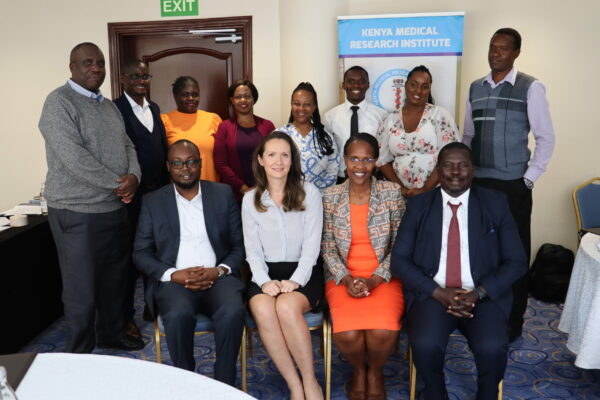February 28, 2013
The growth of MRSA-related hospitalizations was stagnant between 2005 and 2009; Community-associated infections peak in the summer, likely due to seasonal antibiotic overuse.
WASHINGTON, D.C. – Infections with methicillin-resistant Staphylococcus aureus (MRSA) accounted for 463,000 hospital discharges in 2009, more than twice the number of cases in 1999, according to a new study in the current issue of the American Journal of Epidemiology. The study also found distinct seasonal patterns in MRSA infections, which could be related to periodic trends of antibiotic overuse, particularly around flu season.
Normally found on human skin, Staphylococcus aureus can infect wounds and cause life-threatening conditions such as sepsis and pneumonia. Strains of methicillin-resistant S. aureus (MRSA) fail to respond to commonly used antibiotics, making infections more expensive and difficult to treat. Prior studies report MRSA kills approximately 20,000 people each year and increases hospital costs by between $3,000 to more than $35,000.
Once a threat limited to hospitalized patients, over the past decade MRSA infections proliferated in fitness centers, schools, and other public places, affecting previously healthy individuals and causing severe skin and bone infections. The study found that the this strain of community-associated (CA)-MRSA now accounted for over 51% of resistant skin infections, and was further compounding the already large burden of MRSA within hospitals. Young individuals and children were more likely to acquire the community strain, while the hospital-associated type (HA)-MRSA was more likely to infect elderly patients, who spend comparatively more time in healthcare facilities.
Matching a national survey of hospitalization records with diagnostic information from approximately 300 microbiology labs throughout the US, researchers at the Extending the Cure project estimated the number of MRSA-related discharges and analyzed patterns by age and diagnosis. Extending the Cure is a project examining antibiotic resistance at the Washington, D.C. based Center for Disease Dynamics, Economics & Policy (CDDEP), and is supported by the Robert Wood Johnson Foundation.
Although the study reported that the number of MRSA hospitalizations increased by 30,000 between 2005 and 2009, the increase is slight compared with prior years, when resistant infections were increasing rapidly and reached epidemic proportions. The study also found that while certain MRSA-related infections have followed this trend of slowed growth rates, blood and pneumonia MRSA-related hospitalization rates have actually stalled for the first time.
“At least in part, this news implies the success of stricter antibiotic use and infection control measures, which were instituted when MRSA was becoming a big problem in the early 2000s,” said paper author Eili Klein, who is also fellow at CDDEP and an investigator of Extending the Cure. “We should study the success of these interventions and extend them to tackle new emerging threats. Unlike MRSA, we have no new drugs to keep up with the pace at which organisms like Klebsiella or Acinetobacter are becoming resistant.”
The analysis, which is the first national study to examine the seasonal and age patterns of MRSA infections, also found significant seasonality of MRSA infections and the rate at which they affect different age groups. Hospital infections peak in the winter, whereas CA-MRSA was more common in summer months, with this peak being more pronounced among children. According to the authors, this winter lull in community infections could be driven by antibiotic usage for other indications, which peaks during winter flu season and is higher in children.
The new study has several implications for public health and future studies. First, we need better surveillance to address emerging threats before they reach the epidemic proportions of MRSA. Secondly, the continued prevalence of CA-MRSA is worrying and suggests a need for more coordinated campaigns for infection control and judicious antibiotic use in communities as well as hospitals. Finally, more research is needed to better understand changing MRSA trends and apply these lessons to other emerging infections, to explore the interaction between community- and hospital-associated strains, and to aid the development of a staph vaccine.
If you would like to receive a copy of this study or speak to a report author, please contact Alison Buki at [email protected], 202-328-5152.
About Extending the Cure
Extending the Cure is a research effort that examines policy solutions to address the growing problem of antibiotic resistance. The project is based at the Center for Disease Dynamics, Economics & Policy (CDDEP) in Washington, DC. To find out more, go to www.extendingthecure.org.
About the Robert Wood Johnson Foundation
The Robert Wood Johnson Foundation focuses on the pressing health and health care issues facing our country. As the nation’s largest philanthropy devoted exclusively to improving the health and health care of all Americans, the Foundation works with a diverse group of organizations and individuals to identify solutions and achieve comprehensive, meaningful, and timely change. For 40 years the Foundation has brought experience, commitment, and a rigorous, balanced approach to the problems that affect the health and health care of those it serves. When it comes to helping Americans lead healthier lives and get the care they need, the Foundation expects to make a difference in your lifetime. Follow the Foundation on Twitter or Facebook.











